Last Updated on May 29, 2024
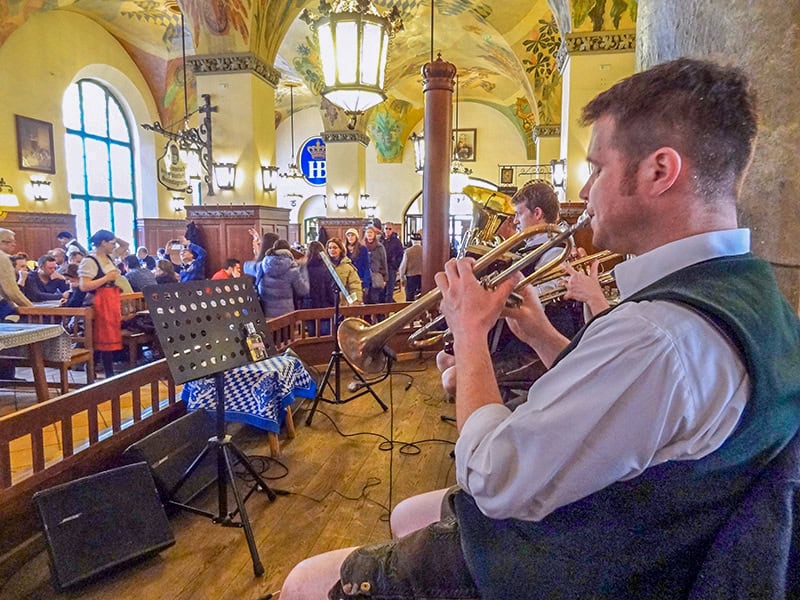
Estimated reading time: 11 minutes
By Jim Ferri
While Berlin may typify the modernity of Germany, it’s Bavaria – a state larger than many European nations – that epitomizes the country for many travelers.
After all, who isn’t charmed by old timbered houses with bright flowers cascading from window boxes .…little villages with streets peppered with konditoreis and bäckereis ….dense forests and soaring Alpine peaks….beer halls resonating with oompah music, where dirndl-clad-waitresses serve countless steins of bier.
While you’ll find many interesting places to visit in Bavaria, here are six towns and cities to enjoy the best of it. Best of all, they’re great places to visit, any time of year in any season.
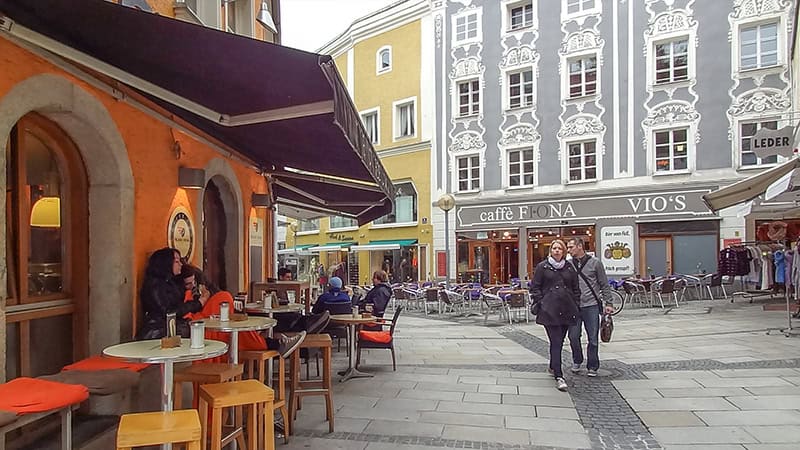
Bavaria with Italianate Style
Passau, along with several other river towns, is an easy day trip from Munich. It’s a postcard-perfect little Bavarian city with a beautiful old town Italianate in style. Its Rathaus, or City Hall, is a stunning building cobbled together from eight patrician houses.
Visit Baroque St. Stephan’s Cathedral to see its massive pipe organ (containing 17,774 pipes, the largest in Europe). Also, visit the former castle of the prince-bishops, now a regional museum. I also enjoyed the Passau Glass Museum and the Old Bishop’s Residence.
Much of the city is a warren of colorful, little streets lined with shops, restaurants, and apartments. The entire area, with its archways and alleyways, has a medieval feel. Multicolored buildings line its streets, and its market area is one of the prettiest places to visit in Bavaria. You’ll also likely love stopping in one of the many cafés along the picturesque Rindermarkt.
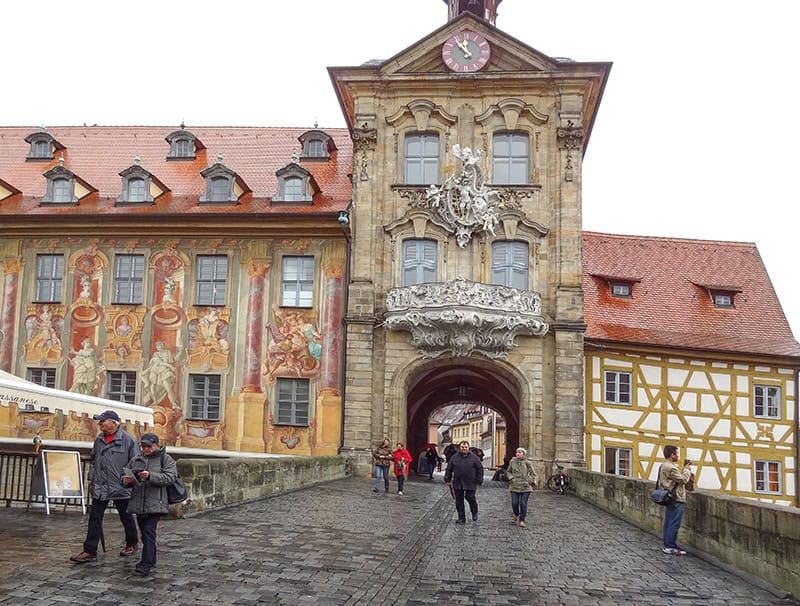
Old Germany At Its Finest, One of the Great Places to Visit in Bavaria
For many people, Bamberg is Old Germany at its finest in Bavaria. On the banks of the Regnitz River, it’s a town of narrow cobblestone streets, ornate mansions, palaces, and churches. A beautiful medieval city, it has one of Europe’s largest fully intact old town centers.
A UNESCO World Heritage Site, Bamberg’s 1,000 years of architectural style includes Romanesque, Gothic, Renaissance, Baroque and 19th-century eclecticism. Also, its old center with 2,000 buildings listed as historical monuments, is Europe’s largest existing group of historical buildings.
First and foremost, see the old town hall, which sits on an island in the middle of the river. With its beautiful exterior and dramatic location, it’s one of the most photographed buildings in town.
Seemingly everywhere you turn you find old timbered houses on one street and old Wedgewood-style architecture on another. It’s a city that screams with color, from pastel buildings to the blazing red geraniums tumbling out of window boxes.
The city also has eight breweries, many of which operate good restaurants. The rauchbier they serve, like the city’s local delicacy, a stuffed onion, is an acquired taste.
Be sure to visit the 800-year-old, triple-nave Bamberg Cathedral, the final resting place of Pope Clement II. The cathedral is also home to the famous equestrian statue of the “Bamberg Rider,” whose identity has remained a mystery for centuries.
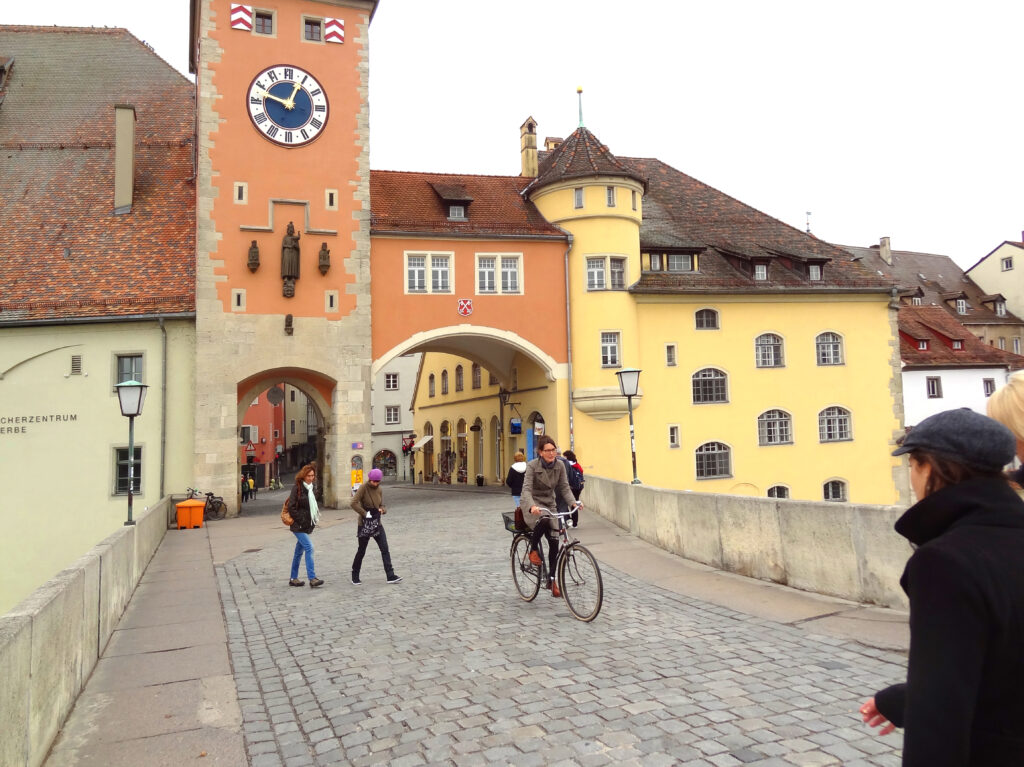
Germany’s Oldest Bridge and Wurst Restaurant
Regensburg, on the Danube River, is Germany’s largest medieval city. Today it’s a quiet little town with beautiful Baroque buildings that, luckily, were undamaged in World War II. It also has been beautifully preserved, the reason many river cruises make it a place for their clientele to visit in Bavaria.
The city is home to Germany’s oldest bridge, the famous Steinerne Brücke (Stone Bridge), a marvel of medieval engineering. Be sure to visit the Historische Wurtsküche at one end of it. It’s a 500+-year-old cottage-size wurst restaurant that’s reputed to be the oldest in Germany. In my opinion, it’s a great place to stop for a beer and wurst, especially a Regensburger sausage.
See the soaring St. Peter’s Cathedral, a Gothic cathedral adorned with beautiful 14th-century stained glass windows. It sits on the site of the old Roman military camp.
Also, visit the turreted Old Town Hall (Altes Rathaus) to see its beautifully decorated Reichssaal. Interestingly, its seats are colored to dictate who could sit where. Incidentally, it was in this hall that the first Parliament of the Holy Roman Empire sat for nearly 150 years.
Finally, go up to the rooftop terrace of the restaurant of the Kaufhof department store on the old market square. Bring your camera to capture an excellent view of the old town and the market area.
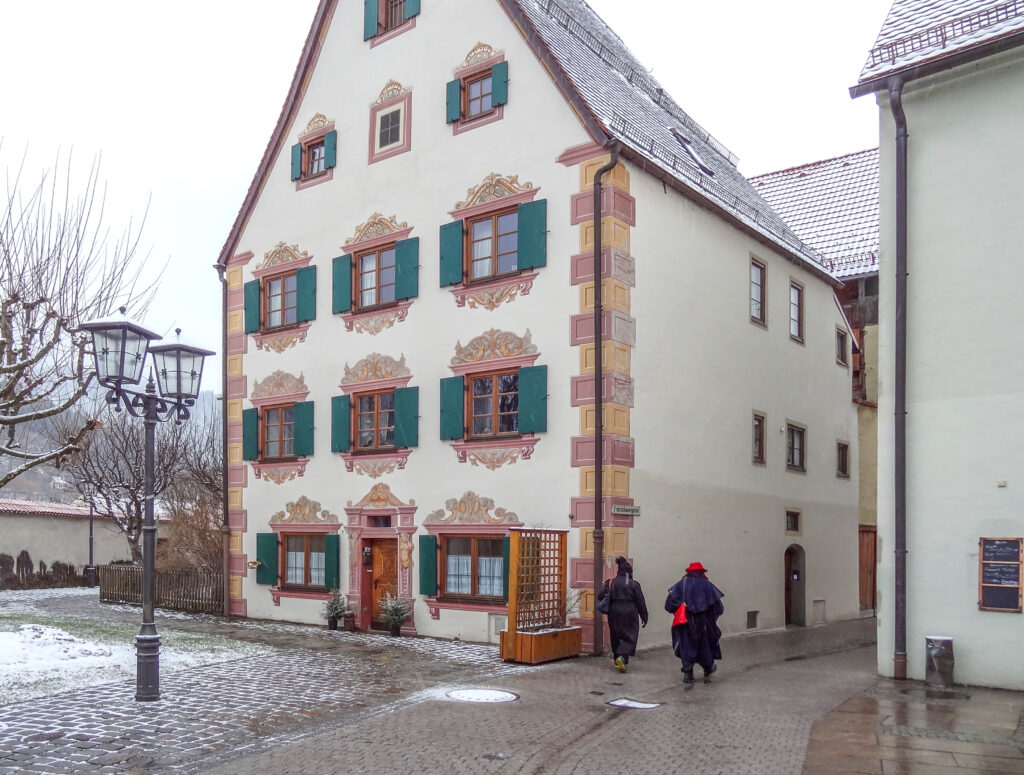
Fussen – a Great Place to Visit in Bavaria
You could almost mistake little Füssen for a back-lot set in Hollywood. It has centuries-old streets and buildings, a palace right in the middle of town, and not one castle, but two.
That second castle, Neuschwanstein, is believed by many to be the model for Cinderella’s Castle in Disneyland. Go see for yourself; you’ll find the resemblance uncanny. It’s one of the most spectacular places to visit in Bavaria any time of year.
The Rathaus is in a ninth-century Benedictine monastery. (If that’s not old enough, there’s also evidence of Roman barracks dating from the fourth century found on the site.) The old building is also home to a fascinating museum of musical instruments.
Visit some of the town’s many little shops and its market. Also, see the High Palace, the former summer residence of the Lord Bishops of Augsburg. Today it’s a well-preserved late-Gothic castle complex that houses a museum of paintings. From a distance, its exterior trompe l’oeil painting tricks you into thinking it has corner towers and ornate window frames.
Disney-like Neuschwanstein Castle, the most famous of the Fussen’s stately residents, is about two miles outside town. You reach it from the castle of Hohenschwangau. The walk takes about 45 minutes although, during the summer months, you can take a shuttle bus. In the winter there are horse-drawn wagons that cost €6 per person and another €3 for the return.
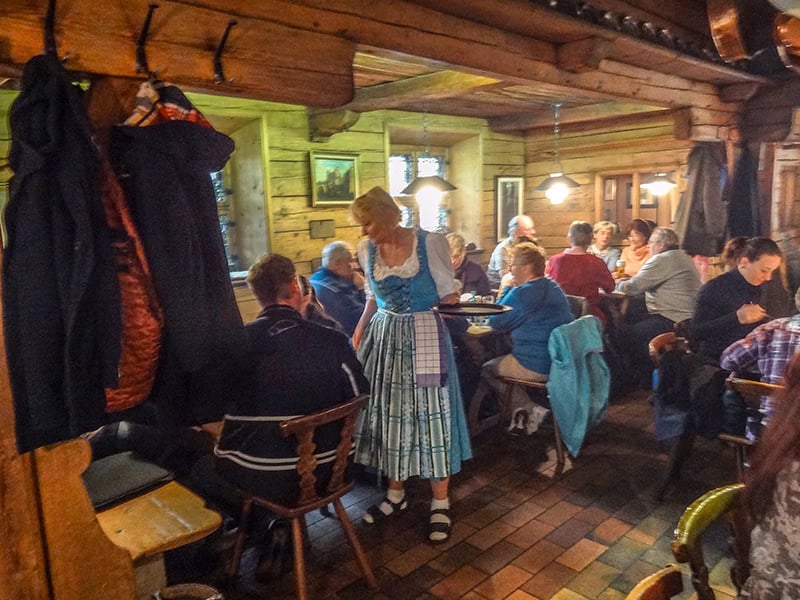
Gingerbread, Sausage and Über Culture in Nuremberg
One city to visit in Bavaria is historic Nuremberg, the second-largest town in Bavaria, which dates back to the 11th century when it was a trading center. In medieval times, it was one of the great cultural centers in Europe.
Today it lures travelers not only with its famous gingerbread and sausages but also with its history. Visit Albrecht-Durer’s House, containing a painting and printing workshop from Durer’s time, where staff demonstrates artistic techniques. Another don’t-miss place to visit here is the Germanic National Museum. Its collection contains over 1.2 million objects, making it Germany’s largest museum of cultural history.
You may also want to visit St. Sebald Church, a beautiful Protestant church with the grave of St. Sebald. It’s also home to a permanent exhibition of pictures of Nurnberg before, during, and after World War II.
Perhaps the city’s most famous sight is Courtroom 600, the site of the famous Nuremberg war trials. Visiting it is a fascinating experience, which you should do with a guide to gain an understanding of it all.
Be sure to relive more history at the Documentation Center adjacent to the former Nazi Party Rally Grounds. Set in a historical, austere building, the Center attempts to demonstrate through narration, photos, and film clips how Hitler used propaganda and public relations machines, along with other tactics, in his rise to power.
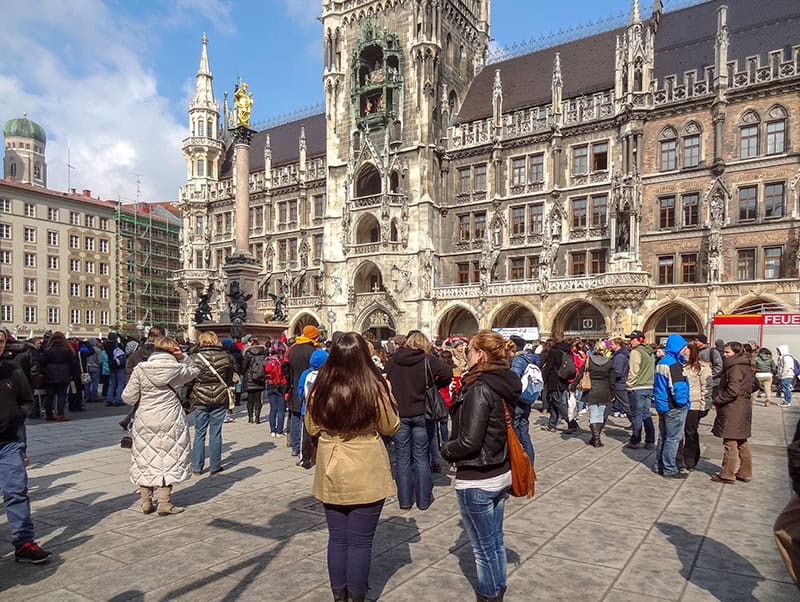
Munich: the Most Famous City to Visit in Bavaria
Munich is Bavaria’s most famous city, and justifiably so. It is one of the very top places to visit in Bavaria.
Start your tour of Munich at the Neues Rathaus on the famed Marienplatz, the medieval marketplace of the old city. Also, stop at St. Peter’s Church, where you’ll feel the imperial hierarchy in Baroque and Gothic architecture.
The store Dallmayr, the purveyor of food to royalty since 1700, is Munich’s answer to Harrods in London. (It’s behind the Rathaus). Customers visit not only to buy groceries but also to have dinner in the restaurant above the marketplace.
Also walk through the nearby Viktualienmarkt, one of Europe’s most renowned outdoor markets. It’s adjacent to the Münchner Schrannenhalle, a large specialty food hall on the site of the city’s old grain market. It’s also a good place to have lunch.
You may also enjoy: Day Trips From Munich to 3 Great Bavarian River Towns / Things To Do in Munich / 26 Great European Day Trips by Rail / Bus
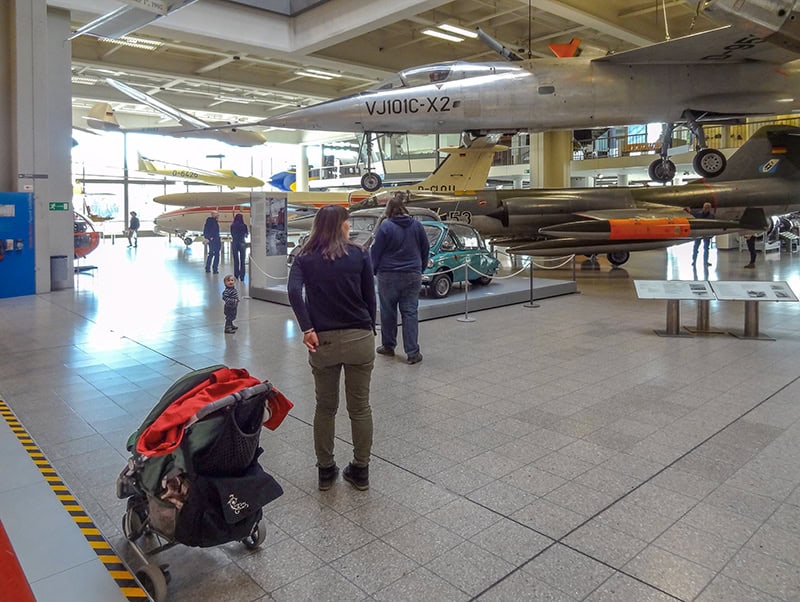
Munich’s Incredible Museums
Munich has more than 80 museums. If you’re short on time, as most of us are, choose to visit the Brandhorst Museum and the Deutsches Museum.
The renowned Brandhorst has a superb collection of modern and contemporary art, including an extensive collection of Andy Warhol’s works. Even if you’re not interested in the exhibits, you’ll find the building itself to be a modern masterpiece.
The incredible Deutsches Museum is one of the largest and oldest science museums in the world. Don’t let that science stuff put you off, however. It’s a place that’s of interest to nearly everyone, likely the reason 1.5 million people visit it every year. This is one of the great places to visit in Bavaria.
Another don’t miss are Munich’s famous beer halls, most notably the Hofbräuhausand Augustiner Brau.
The Hofbräuhaus draws a large tourist crowd with its oompah band and Bavarian ambiance. Order a stein of the original Hofbräu (€9.20 per liter) and a Münchner Weisswürste, the city’s original veal sausage. Both are great.
Many Münchners, however, prefer the less touristy Augustiner Brau, named for the Augustinian monks who founded the brewery and city. You’ll find good food and beer here as well. You’ll also find men in their old Bavarian hats and jackets that add to the non-touristy ambiance.
If You Go:
German National Tourist Board

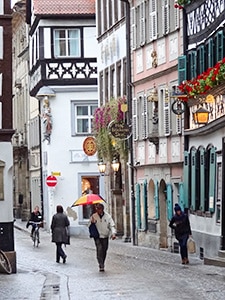
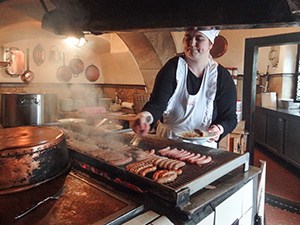
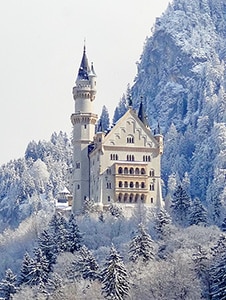
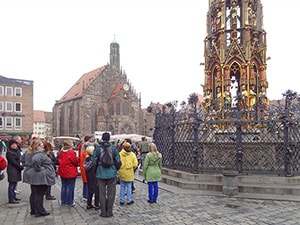
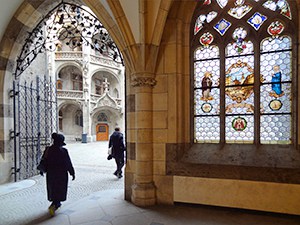
Your article is great! It sounds so beautiful and fun there in Bavaria. Thanks for it.
Thank you Carla.